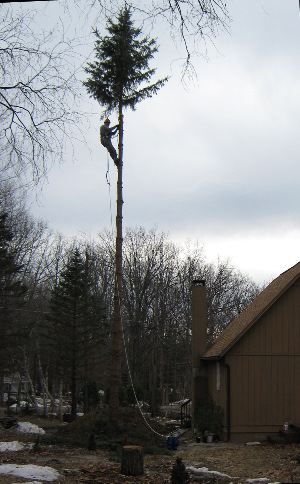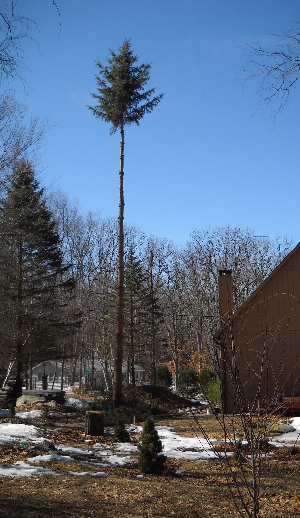Ryan Shaw
DR Shaw
Using the spurs happened to be just the beginning of the learning curve. After conquering fear of height I removed all the branches up to the topping part. However when I am now just bellow the top, any movement causes the trunk to wobble, and I am afraid of a dangerous jolt when the top will start falling. The trunk is about 6" in diameter at the lanyard. The false crotch for the climbing line is wrapped around a 4" trunk right above the 6" trunk/knot. What are the conciderations in this probably typical scenario? Would you leave the lower branches to absorb a shock(too late now) or it is not commonly practiced? What if you have to rig the top? Does this top appear too heavy in order to do it safely? Any thoughts are appreciated.


Just noticed this question when I re-read the post: "Would you leave the lower branches to absorb a shock(too late now) or it is not commonly practiced?" I'm used to arborists doing exactly what you did in these pics, acting like Drake (started from the bottom now we here.) But I recently worked with a guy who only cut all the branches off of one side of the tree, worked his way up to the top, topped it, then worked his way down chopping off the rest of the branches. I thought it was a little peculiar, but figured he was doing that just to give him footing. But after, he asked me if I knew why he did that. I guessed for footing, but then he told me that, no, it was to absorb the shock.. so, yes, that is a practice done on ex-current trees. It takes longer to climb (if you're doing it properly/safely) because you're constantly attaching your secondary then detaching your primary and vice versa, but it definitely does work as a nice shock absorber


























































